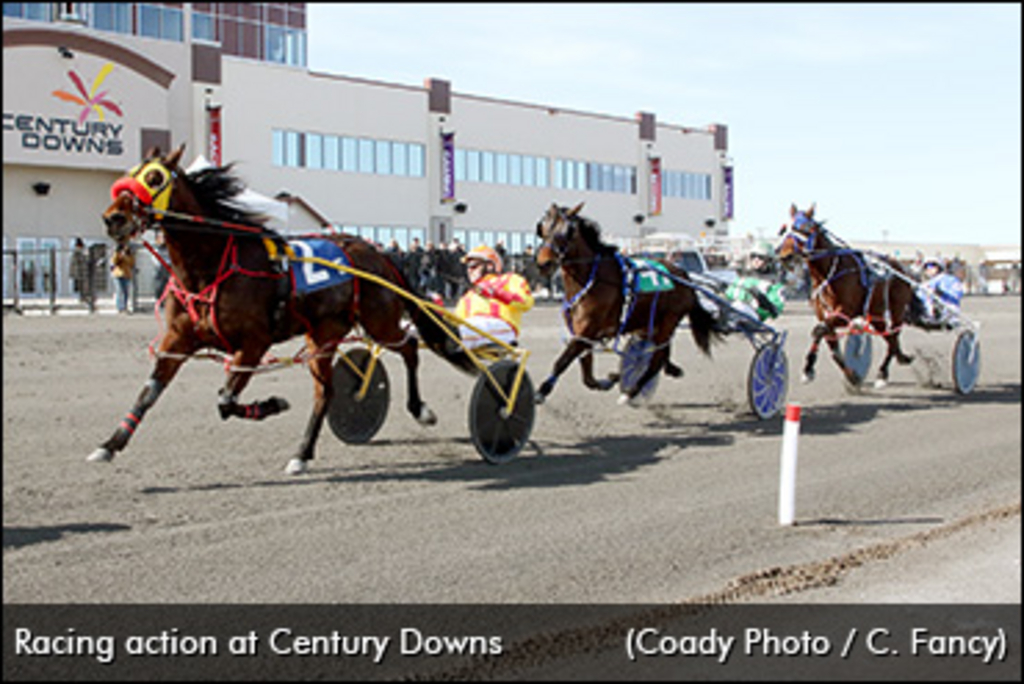Alberta Racing Surpasses Expectations

Eight months ago the prospects for horse racing, not just in Alberta but everywhere, looked bleak. Desperate even. COVID-19 had just broken out and there was doubt that horse racing would even take place. But look at what just happened. Thoroughbred racing averaged over $800,000 a day at the recently completed meet at Edmonton’s Century Mile which was an increase of almost 400 per cent over the $162,000 average of 2019.
Put a different way the handle on last year’s Canadian Derby, the hallmark day for thoroughbred racing, was $833,000. This year they averaged almost that much. Harness racing in Calgary averaged $175,000 a day at Century Mile which was an increase of 75 per cent over last year.
“Incredible,” said Kent Verlik, chief executive officer for Horse Racing Alberta. “We didn’t know if we would even be able to race. But we went to the government and explained to them how we could get up, get back to racing and do it safely. They accepted our proposal and here we are. While other sports shut down, horse racing in Alberta exploded.”
“To do what we accomplished in the middle of a pandemic is amazing,” added Verlik. “We missed all of March, April and May. We didn’t start racing until the middle of June. We were scheduled to race 227 days but we only got in 140 race dates and yet we still managed to pay off our deficit which, again, is amazing.” Racing largely to no crowds except in the clubhouse, the increases were almost all off-track.
“We found a time slot -- Friday and Sunday evenings at Century Mile and afternoons at Century Downs -- where there was a gap and not much other live racing competition taking place,” said Verlik. “That was the difference.”
That and fuller fields especially for thoroughbred racing given that field size was seldom a problem for harness racing. Last year thoroughbred racing only averaged 6.8 horses per field. This year it was close to 7.5. “Bettors want larger fields so that there are more combinations available,” said Verlik. “Field size matters a lot.”
The average races per card for thoroughbred racing was also up from 7.5 to 8.3 -- another important metric to success. Quite simply the product improved. It wasn’t that wagering tapered off after a hot start either. Century Mile bet over $1 million on last Friday’s closing card. Century Downs wagered $257,000 on their last day which represented the second highest handle of the meet.
“What stands out for both tracks is that when more competition came in from other tracks and other sports starting up again we actually got stronger,” said Paul Ryneveld, managing director of Edmonton’s Century Mile Racetrack and Casino and Calgary’s Century Downs Racetrack and Casino. “The good news is we have people that are following us, wagering on us and want to wager on us in the right time slots.”
Slot machine revenue was also up at Century Downs while slot revenue at Century Mile held its own. Ryneveld said what that translates to is at least a 10 per cent purse increase for both breeds starting next January. While thoroughbreds go into hibernation until next year, harness racing starts up this Sunday and Monday at Century Mile with 6:15 p.m. post times. After this weekend harness racing will go to a regular Saturday/Sunday 6:15 p.m. schedule into February.
“Since 2015 our handle has gone up every year,” said Fred Gillis, executive director for the Alberta Standardbred Horsemen’s Association. “It had been going up between eight and 12 per cent every year. But this year our completed meet at Century Downs was phenomenal with its 75 per cent increase."
Gillis fully expects the upward trend to continue. Two words from Fred Gillis: "I’m optimistic. The bike wheel had been going in the wrong direction. We’re going in the right direction again now.”
Ryneveld agrees. “If you had told me when we first opened Century Downs in Calgary in 2015 - when we only bet $64,000 a day - that we would one day have a handle over $300,000 and 12 days over $200,000 I would have said you were crazy.” Gillis said the stakes schedule for next year is very solid. “We had $1.1 million in stakes money this year. We’re looking at $1.7 million in stakes purses next year. Stakes purses are going up. Overnight purses are going up. We’re attracting owners again. I talk to a lot of people and I can hear it in their voices."
“Like I said, I’m very optimistic. In fact, I’ve never been more optimistic. We will entice breeders to get better stock. We will entice new stallions. Breeders didn’t have an a reason to get back in. And there has to be a reason for people to race horses and breed horses,” continued Gillis. “The money wasn’t there; the interest wasn’t there. But there is now. Owners are businessmen. They have to look at what’s on the paper and see if it’s worthwhile to spend $20,000 on a horse.”
Ryneveld believes this is only the beginning. “Our goal is to average $1 million a day on thoroughbred racing and $400,000 on harness racing. It’s doable,” he said. “We can build off this and not see any contraction. We moved both tracks forward in the minds of bettors faster than what would have happened in normal circumstances.”
If that happens the purse structure will incite further growth because then more stables will look to come to Alberta to race. More horses, more races, bigger fields, more purse money...“The future is very bright,” said Gillis.
(Curtis Stock / thehorses.com)

